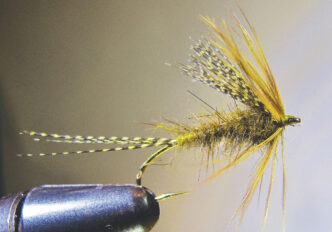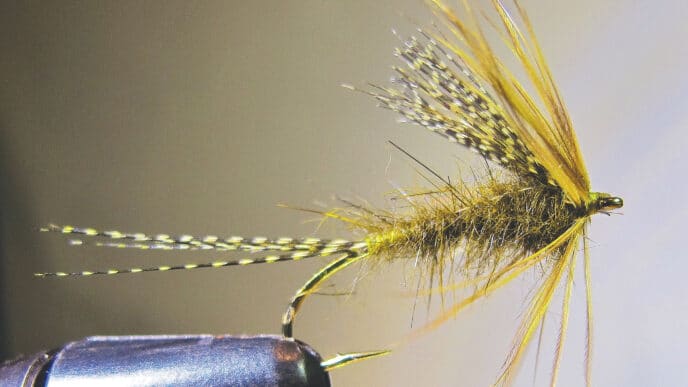Nevada City, California, February 7, 2017. “The area is highly unstable, and we expect further slides,” (State Park Chief Ranger) Green said. Access to the Yuba River is impossible, and the very high flows — carrying trees and huge boulders — present a hazard situation.
— YubaNet
Entire trees and huge boulders being swept down the Yuba River is not an extraordinary event. What happens next is. The river abruptly collides with a 200-foot wall of concrete, and the boulders, rocks, gravel, sand, sticks, leaves, and silt abruptly settle to the bottom of the reservoir and cease their downstream journey. The floating trees and rubbish get entangled in steel cable traps and trash screens, and their journey toward the sea, too, comes to a halt.
The living things in rivers have evolved over millions of years to depend on the renewal of habitat and food that the downstream migration of debris provides. The life of the river itself is dependent on the debris. Boulders and trees that lodge in the streambed disrupt flow, cause channels to migrate, undercut banks, carve holes, and build bars and sculpt back bays.
A river that has lost its downstream recruitment of gravel soon scours to bedrock, leaving nothing in place for bugs to live in, spawning to occur, or fish larvae to hide. To counter this habitat loss, agencies are spending millions of dollars to pump gravel into the Yuba at the base of Englebright Dam so that endangered salmon and threatened steelhead might find pockets of it in which to spawn. This has been a success, in that fish are finding and nesting in these meager artificial patches of gravel, but in the bigger picture, these few pockets were historically large spawning beds, and there are no “huge boulders” rolling beyond the dam to replace those that have long ago been washed to sea. It doesn’t take a fisheries biologist to understand the loss. Any angler worth his salt understands the importance of “huge boulders” when it comes to fish habitat.
The Yuba River is unique in the world of dam-blocked rivers in that about eight miles downstream of Englebright Dam is a massive repository of cobbles left over from the hydraulic gold mining era of the 1800s. Estimates out of UC Davis suggest that from these spoils piles, the river has about a hundred years of cobble recruitment. These mining spoils were excavated from the ancient Yuba riverbed. The rocks range in size from baseballs to bowling balls and are just as smooth and round. Prior to mining, even moderate increases in river velocity set the riverbed in motion and rolling toward the Pacific.
The Yuba, like most any other river below a dam, has a severe dearth of large woody debris (LWD). The last thing operators want are trees cascading over their dams or ramming through their penstocks. To avoid such mayhem, logs, trees, errant houseboats, and other floating objects are trapped, then skimmed from the reservoir before they can continue downstream. In the past, they were taken to some remote location to rot or be burned. Today, we have come to recognize the immense value of LWD, not only in creating the topography of the river, but in feeding and harboring its inhabitants.
To remedy the lack of LWD, trees are sometimes felled into the affected reach, or logs are transported by truck or helicopters. Trout Unlimited, in concert with the Forest Service, did an exemplary job of carefully and thoughtfully placing logs in the Little Truckee River below Stampede Reservoir. The logs were secured so that in high-water events, they wouldn’t simply be washed away. Almost immediately, a small chorus of whiny anglers (always the same ones, it seems) bitched about the project. Oblivious of the obvious, they raised complaints that the logs “weren’t natural,” or that “the project is total waste of time and money,” or, even more self-centered, “We don’t need more places to lose our flies.”
Meanwhile, undercuts now are forming on the river sides of the logs, and soft eddies are being created on the back sides. Bark is starting to loosen, providing habitat for creatures that like dark, tight spaces in which to dwell. Periphyton is sprouting from the softening cellulose and forming green pastures upon which macroinvertebrates graze. Young fish are sheltered in the diffused current caused by hanging limbs, and in the safety of their shade, trout are protected from kingfishers and herons.
On the Yuba River, the US Army Corps of Engineers was tasked with replacing some of the woody debris their dams have scoured from the waterway. Instead of the thoughtful, integrated approach taken by the agencies and NGOs on the Little Truckee, the USACE hauled logs from the headwaters and dumped them in piles on open gravel bars. For the past several years, it has been a running joke among those who use the Yuba that the Corps was simply loading the gun. The outcome was obvious to even the most blithe observer who has seen the Yuba in flood. Every dozen years or so, these bars are under many feet of swiftly flowing water, and 2017 was no exception.
As January rains began melting the Sierra snowpack, the river rose quickly and dramatically, but certainly nothing out of the expected. As the river barely nicked flood stage at the Marysville gauge, rafts of Army Corps logs swirled past on their way to become hazards to navigation in the Sacramento River and beyond. It was a perfect example of how a bureaucrat in some distant office authorized a project without any thought beyond checking off the box requiring LWD to be added to the river. It would be better, but perhaps not likely, if future LWD placement is done with some forethought and 20/20 hindsight. The Army Corps of Engineers is just that — a branch of combat forces commanded by engineers who have graduated from some of the finest technical schools in America. If they can’t figure out how to anchor LWD to a floodplain, who can? Trout Unlimited.
















